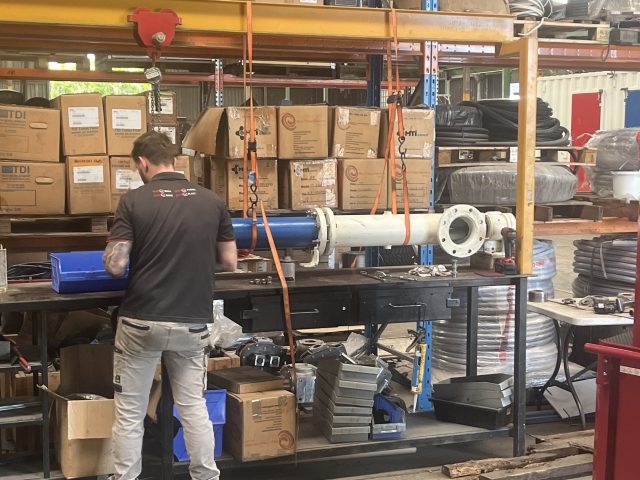Pump Maintenance Made Easy: 7 Powerful Tips to Keep Your Pumps Running Smoothly

Pump maintenance: Industrial pumps are the backbone of many critical operations across Australia. From dewatering to chemical processing, a reliable pump can mean the difference between uptime and unplanned downtime. At MultiTorque, we’ve spent over 15 years maintaining and repairing pumps of all types—including centrifugal, progressive cavity, diaphragm, and gear pumps. In this article, we’ll break down seven essential pump maintenance practices to keep your systems running at full throttle.
1. Regular Visual Inspections
Start with the basics. Visually inspect your pump weekly for leaks, cracks, unusual vibrations, or strange noises. If you notice oil or grease seeping from the seals or casing, it’s time to act. Early detection can save you thousands in emergency repairs.
2. Keep It Lubricated
Just like an engine, pumps rely on proper lubrication. Bearings and seals should be checked regularly and greased as per the manufacturer’s recommendation. Over-lubrication can be just as harmful as under-lubrication, so always follow the guidelines specific to your pump model.
3. Monitor Vibration and Noise Levels
Abnormal vibration is often a sign of misalignment, worn bearings, or cavitation. Using vibration monitoring tools can help detect problems before they escalate. If your pump sounds like it’s chewing gravel, shut it down immediately and call in the pros.
4. Maintain Clean Inlet and Outlet Lines
Clogs in the inlet or outlet can cause a drop in flow rate or pressure, putting excessive strain on the motor. Regularly flush and inspect these lines—especially if your pump handles sludge, slurry, or waste oil. Consider installing strainers or filters if blockage is a recurring issue.
5. Replace Worn Seals and Gaskets
Mechanical seals, O-rings, and gaskets wear out over time. Don’t wait for a failure. Include them in your preventive maintenance plan and replace them at the first sign of fatigue. Leaking seals are not only inefficient—they’re a safety hazard.
6. Align Your Pump and Motor
Misalignment between the pump and motor coupling can cause shaft damage and premature bearing wear. Whether you’re running a rotary lobe pump, diaphragm pump, or centrifugal unit, ensure the alignment is checked during every service.
7. Document Everything
Track your maintenance history, repairs, replacements, and inspections. This allows you to identify trends, predict failures, and plan downtime more effectively. At MultiTorque, our servicing teams maintain detailed records for every client so you never miss a beat.
Why Preventive Pump Maintenance Matters
Reactive maintenance might seem easier in the short term, but it’s a recipe for disaster in the long run. An unplanned failure could halt your entire operation, damage connected machinery, and rack up massive repair bills. A proactive pump maintenance plan keeps your systems reliable, efficient, and safe.
MultiTorque services a wide range of pumps across Perth, Brisbane, and beyond—including trusted brands like NOV, Wilden, Orbit, Napco, Grundfos, and Cat Pumps. Our team specialises in diagnosing, repairing, and servicing both dynamic and positive displacement pumps. We even offer full overhauls and custom solutions for mobile and trailer-mounted systems.

Get Expert Pump Maintenance With MultiTorque
Don’t leave your equipment to chance. Whether you’re operating a small diaphragm pump or a large industrial centrifugal system, regular pump maintenance will protect your investment.
Call MultiTorque today on 1300 726 525 or email sales@multitorque.com to schedule a service, request a quote, or get expert advice.
📍 Learn more at www.multitorque.com.au
🔗 Connect with us on LinkedIn: MultiTorque LinkedIn
